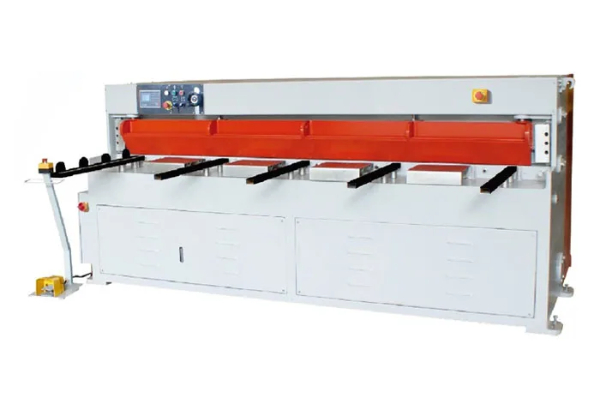
Precision and Quality in Metal Plate Bending Machine Outputs
- By:Metmac
- 2024-09-05
- 141
In the realm of metal fabrication, precision and quality are paramount. Metal plate bending machines are indispensable tools for transforming flat sheets of metal into complex shapes for various industrial applications. Achieving high levels of precision and quality in the outputs of these machines is crucial for ensuring structural integrity, functionality, and aesthetic appeal. This article will delve into the critical aspects of precision and quality in metal plate bending machine outputs, highlighting the factors that contribute to and impact the final results.
Accuracy and Repeatability
Accuracy refers to the machine’s ability to bend metal plates to the desired dimensions and angles with minimal deviation. Repeatability encompasses the machine’s consistency in reproducing the same bend parameters repeatedly. Precise machines use advanced control systems and high-resolution encoders to ensure accurate positioning of the bending beam and precise control over the bending angle. Repeatability is achieved through robust mechanical systems, minimizing backlash and maintaining consistent machine conditions.
Surface Finish and Dimensional Stability
Surface finish is a critical factor determining the aesthetics and functionality of the bent metal plate. A smooth, burr-free surface is essential for applications where corrosion resistance or surface appearance is important. Machines with advanced clamping systems and high-quality tooling minimize surface damage during bending. Dimensional stability refers to the ability of the bent metal plate to retain its desired shape over time. Precise machines use materials and processes that ensure the bent plate exhibits minimal springback and distortion.
Consistency and Uniformity
Consistency in bending outputs is crucial for high-volume production. Machines with automated systems and advanced feedback mechanisms maintain consistent bending parameters throughout the process. This eliminates variations in bend quality and ensures that each bent part meets the specified requirements. Uniformity ensures that all bends within a single part exhibit the same characteristics, such as bend radius, angle, and surface finish. Advanced control systems monitor the bending process in real-time and adjust parameters to compensate for material variations and machine tolerances.
Material Compatibility and Bending Range
Material compatibility is crucial for achieving optimal bending results. Machines should be designed to handle a wide range of metal alloys, thicknesses, and strengths. The bending range refers to the minimum and maximum bend radii or angles a machine can achieve. Selecting a machine with the appropriate bending range for the intended application ensures accurate bending and minimizes the risk of material damage.
Operator Expertise and Machine Maintenance
Operator expertise plays a significant role in achieving precision and quality outputs. Operators must be trained to understand the machine’s capabilities and how to operate it effectively. Proper maintenance and calibration of the machine are also essential. Regular inspections, lubrication, and software updates ensure that the machine remains in optimal condition and performs consistently.
By considering these critical aspects, metal fabricators can optimize the precision and quality of metal plate bending machine outputs. This results in the production of high-quality, reliable parts that meet stringent industry standards and customer expectations.
-
Advanced Sheet Metal Rolling, Cutting, and Folding Machines for Efficient Fabrication
2025/10/22 -
High-Precision Sheet Metal Bending and Cutting Solutions for Modern Manufacturing
2025/10/22 -
High-Precision Solutions from Leading Sheet Metal Cutting Machine Manufacturers
2025/09/11 -
Reliable Sheet Metal Equipment for Sale to Support Precision Fabrication
2025/07/17
-
Advanced Sheet Metal Rolling, Laser Cutting, and Folding Machines for Precision Fabrication
2025/10/31 -
High-Performance Sheet Metal Bending and Cutting Machines for Modern Fabrication
2025/10/31 -
High-Quality Sheet Metal Equipment for Sale: Efficient Solutions for Modern Manufacturing
2025/10/31 -
High-Performance Sheet Metal Equipment for Sale: Forming and Shearing Solutions for Modern Fabrication
2025/10/22
-
A Guide to the Latest Innovations in Sheet Metal Folding Machines
2024/11/29 -
Key Features to Consider When Investing in a Sheet Metal Folding Machine
2024/11/28 -
Enhancing Precision with Advanced Sheet Metal Folding Machines
2024/11/27 -
How to Choose the Right Sheet Metal Folding Machine for Your Workshop
2024/11/26






